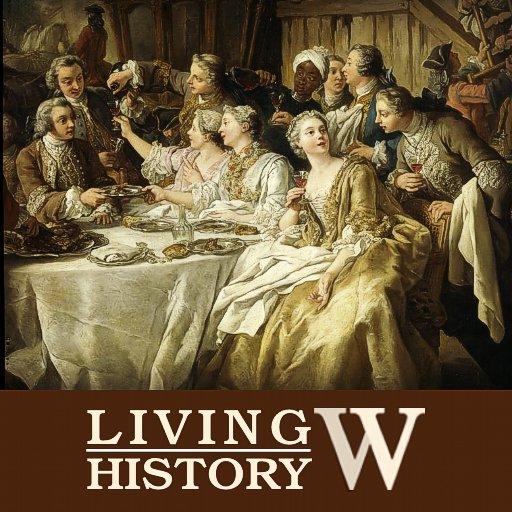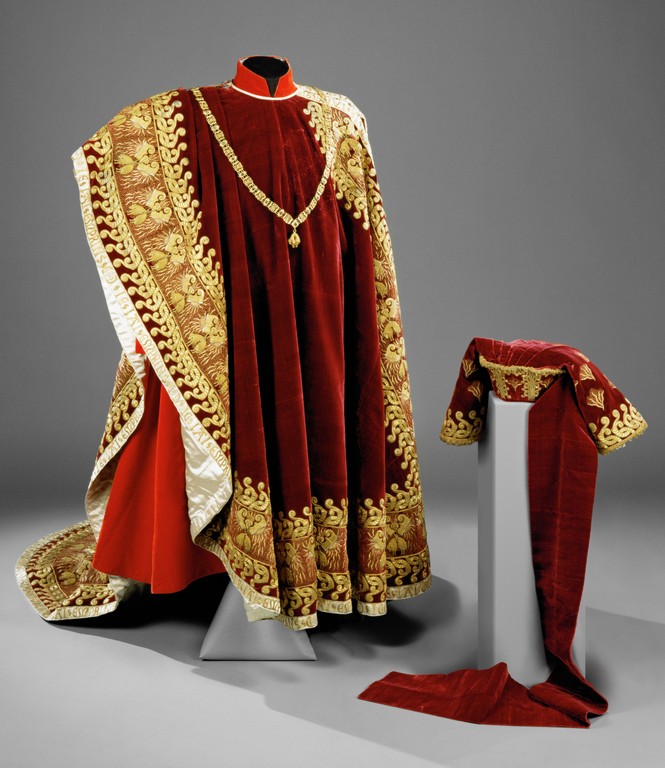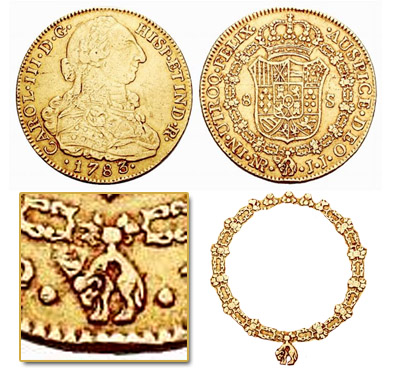The Order of the Golden Fleece
Orde van het Gulden Vlies ; Ordre de la Toison d'Or ; Orden vom Goldenen Vlies ; Ordine del Toson d'Oro ; Orden del Toisn de Oro )
is an order of chivalry founded in bruges by Duke Philipe III of Burgundy in 1430, to celebrate his marriage to the portuguese princess Isabella of Aviz. It is one of the most prestigious orders in Europe. Today there exist two branches of the Order: the Spanish Fleece and the Austrian Fleece. The Sovereigns of the Spanish and Austrian branches.
es una orden de caballera fundada en Brujas por el duque Philipe III de Borgoa en 1430 , para celebrar su matrimonio con la princesa Isabel de Aviz portugus . Es uno de los encargos ms prestigiosos de Europa . Hoy en da existen dos ramas de la Orden : el vellocino de espaol y el austriaco Fleece . Los soberanos de las ramas espaola y austriaca .
 The Order of the Golden Fleece was established January 10, 1430, by Philip the Good, Duke of Burgundy, in celebration of the prosperous and wealthy domains united in his person that ran from Flanders to Switzerland. It is restricted to a limited number of knights, initially 24 but increased to 30 in 1433, and 50 in 1516, plus the sovereign. It received further privileges unusual to any order of knighthood: the sovereign undertook to consult the order before going to war; all disputes between the knights were to be settled by the order; at each chapter the deeds of each knight were held in review, and punishments and admonitions were dealt out to offenders, and to this the sovereign was expressly subject; the knights could claim as of right to be tried by their fellows on charges of rebellion, heresy and treason, and Charles V conferred on the order exclusive jurisdiction over all crimes committed by the knights; the arrest of the offender had to be by warrant signed by at least six knights, and during the process of charge and trial he remained not in prison but in the gentle custody of his fellow knights. The order, conceived in an ecclesiastical spirit in which mass and obsequies were prominent and the knights were seated in choirstalls like canons, was explicitly denied to "heretics", and so became an exclusively Catholic award during the Reformation.
The Order of the Golden Fleece was established January 10, 1430, by Philip the Good, Duke of Burgundy, in celebration of the prosperous and wealthy domains united in his person that ran from Flanders to Switzerland. It is restricted to a limited number of knights, initially 24 but increased to 30 in 1433, and 50 in 1516, plus the sovereign. It received further privileges unusual to any order of knighthood: the sovereign undertook to consult the order before going to war; all disputes between the knights were to be settled by the order; at each chapter the deeds of each knight were held in review, and punishments and admonitions were dealt out to offenders, and to this the sovereign was expressly subject; the knights could claim as of right to be tried by their fellows on charges of rebellion, heresy and treason, and Charles V conferred on the order exclusive jurisdiction over all crimes committed by the knights; the arrest of the offender had to be by warrant signed by at least six knights, and during the process of charge and trial he remained not in prison but in the gentle custody of his fellow knights. The order, conceived in an ecclesiastical spirit in which mass and obsequies were prominent and the knights were seated in choirstalls like canons, was explicitly denied to "heretics", and so became an exclusively Catholic award during the Reformation.The Order of the Golden Fleece was defended from possible accusations of prideful pomp by Guillaume Machaut, who asserted that it was instituted:
Non point pour jeu ne pour esbatement,
Mais la fin que soit attribue
Loenge Dieu trestout premirement
Et aux bons gloire et haulte renomme.
Translated into English:
Not for amusement nor for recreation,
But for the purpose that praise shall be given to God,
In the very first place,
And to the good, glory and high renown.
The choice of the Golden Fleece of Colchis as the symbol of a Christian order caused some controversy, not so much because of its pagan context, which could be incorporated in chivalric ideals, as in the Nine Worthies, but because the feats of Jason, familiar to all, were not without causes of reproach, expressed in anti-Burgundian terms by Alain Chartier in his Ballade de Fougres instancing Jason "qui pour emportrer la toison De Colcos se veult parjurer". The bishop of Chlons, chancellor of the Order, rescued the fleece's reputation by identifying it instead with the fleece of Gideon that received the dew of Heaven.
The badge of the Order, in the form of a sheepskin, was suspended from a jewelled collar of firesteels in the shape of the letter B, for Burgundy, linked by flints; with the motto "Pretium Laborum Non Vile" ("Not a bad reward for labour") engraved on the front of the central link, and Philip's motto "Non Aliud" ("I will have no other") on the back (non-royal knights of the Golden Fleece were forbidden to belong to any other order of knighthood).
La Orden del Toisn de Oro fue establecida 10 de enero 1430, por Felipe el Bueno, duque de Borgoa, en la celebracin de los dominios prspera y rica en su persona que se extenda desde Flandes a Suiza. Se limita a un nmero limitado de caballeros, en un principio 24, pero aument a 30 en 1433, y 50 en 1516, adems de los soberanos recibi privilegios inusuales an ms a cualquier orden de caballera:. La soberana se comprometi a consultar la orden antes de ir a la guerra, todas las controversias entre los caballeros deban ser resueltas por el orden, en cada captulo las obras de cada caballero se llevaron a cabo en la revisin, y los castigos y amonestaciones fueron repartidas a los delincuentes, y para ello el soberano se someten expresamente, la caballeros podan reclamar como un derecho a ser juzgada por sus compaeros, acusados de rebelin, hereja y traicin a la patria, y Carlos V, atribuidas a la jurisdiccin exclusiva sobre todos para los delitos cometidos por los caballeros, la detencin del delincuente tuvo que ser por orden judicial firmada por por lo menos seis caballeros, y durante el proceso de carga y el juicio no se mantuvo en prisin, pero bajo la custodia de su suave compaeros caballeros. El orden, concebido en un espritu eclesistico en el que la masa y exequias fueron destacadas y los caballeros estaban sentados en sillera en el coro como los cnones, se neg explcitamente a los "herejes", y as se convirti en un premio exclusivamente catlica durante la Reforma.
La Orden del Toisn de Oro se defendi de las acusaciones de la pompa posible orgulloso de Guillaume de Machaut, quien afirm que su institucin:
"Punto de no verter jeu pour ne esbatement,
Mais la fin Que soit attribue
Loenge Dieu trestout premirement
Et Aux Bons gloire et haulte Renomme.
"
Traducida al Ingls:
"No es para divertirse, ni para la recreacin,
Sin embargo, con el propsito de que la alabanza se da a Dios,
En el primer lugar,
Y para la gloria bueno, y alto renombre.
"
La eleccin del Toisn de Oro de Clquida como el smbolo de un orden cristiano caus una cierta controversia, no tanto por su contexto pagano, que podra ser incorporado en ideales de la caballera, como en el Nueve de la Fama, pero debido a las hazaas de Jason, familiar a todos, no sin causa de reproche, expresado en trminos anti-borgon de Alain Chartier en su Ballade de Fougres instancias Jason "qui pour emportrer la Toison De Colcos s veult parjurer". El obispo de Chlons, rector de la orden, rescat la reputacin de la lana mediante la identificacin en su lugar con el velln de Geden que recibi el roco del cielo .
La insignia de la Orden, en la forma de una piel de oveja, fue suspendido de un collar de piedras preciosas de firesteels en la forma de la letra B, de Borgoa, unidos por piedras, con el lema "Pretium Laborum no vil" ("No es un mal engraved on the front of the central link, and Philip's motto "Non Aliud" ("I will have no other" on the back (non-royal knights of the Golden Fleece were forbidden to belong to any other order"> recompensa por el trabajo ") grabado en la parte delantera del enlace central, y el lema de Felipe" no Aliud "(" voy a tener ningn otro ") en la parte posterior (no reales caballeros del Toisn de Oro se les prohibi formar parte de cualquier otro orden de caballera).
on the back (non-royal knights of the Golden Fleece were forbidden to belong to any other order"> recompensa por el trabajo ") grabado en la parte delantera del enlace central, y el lema de Felipe" no Aliud "(" voy a tener ningn otro ") en la parte posterior (no reales caballeros del Toisn de Oro se les prohibi formar parte de cualquier otro orden de caballera).
La Orden del Toisn de Oro se defendi de las acusaciones de la pompa posible orgulloso de Guillaume de Machaut, quien afirm que su institucin:
"Punto de no verter jeu pour ne esbatement,
Mais la fin Que soit attribue
Loenge Dieu trestout premirement
Et Aux Bons gloire et haulte Renomme.
"
Traducida al Ingls:
"No es para divertirse, ni para la recreacin,
Sin embargo, con el propsito de que la alabanza se da a Dios,
En el primer lugar,
Y para la gloria bueno, y alto renombre.
"
La eleccin del Toisn de Oro de Clquida como el smbolo de un orden cristiano caus una cierta controversia, no tanto por su contexto pagano, que podra ser incorporado en ideales de la caballera, como en el Nueve de la Fama, pero debido a las hazaas de Jason, familiar a todos, no sin causa de reproche, expresado en trminos anti-borgon de Alain Chartier en su Ballade de Fougres instancias Jason "qui pour emportrer la Toison De Colcos s veult parjurer". El obispo de Chlons, rector de la orden, rescat la reputacin de la lana mediante la identificacin en su lugar con el velln de Geden que recibi el roco del cielo .
La insignia de la Orden, en la forma de una piel de oveja, fue suspendido de un collar de piedras preciosas de firesteels en la forma de la letra B, de Borgoa, unidos por piedras, con el lema "Pretium Laborum no vil" ("No es un mal engraved on the front of the central link, and Philip's motto "Non Aliud" ("I will have no other"
 on the back (non-royal knights of the Golden Fleece were forbidden to belong to any other order"> recompensa por el trabajo ") grabado en la parte delantera del enlace central, y el lema de Felipe" no Aliud "(" voy a tener ningn otro ") en la parte posterior (no reales caballeros del Toisn de Oro se les prohibi formar parte de cualquier otro orden de caballera).
on the back (non-royal knights of the Golden Fleece were forbidden to belong to any other order"> recompensa por el trabajo ") grabado en la parte delantera del enlace central, y el lema de Felipe" no Aliud "(" voy a tener ningn otro ") en la parte posterior (no reales caballeros del Toisn de Oro se les prohibi formar parte de cualquier otro orden de caballera). updated by @carlos-iii-de-borbon-y-farnesio: 06 Oct 2016 06:09:26AM




